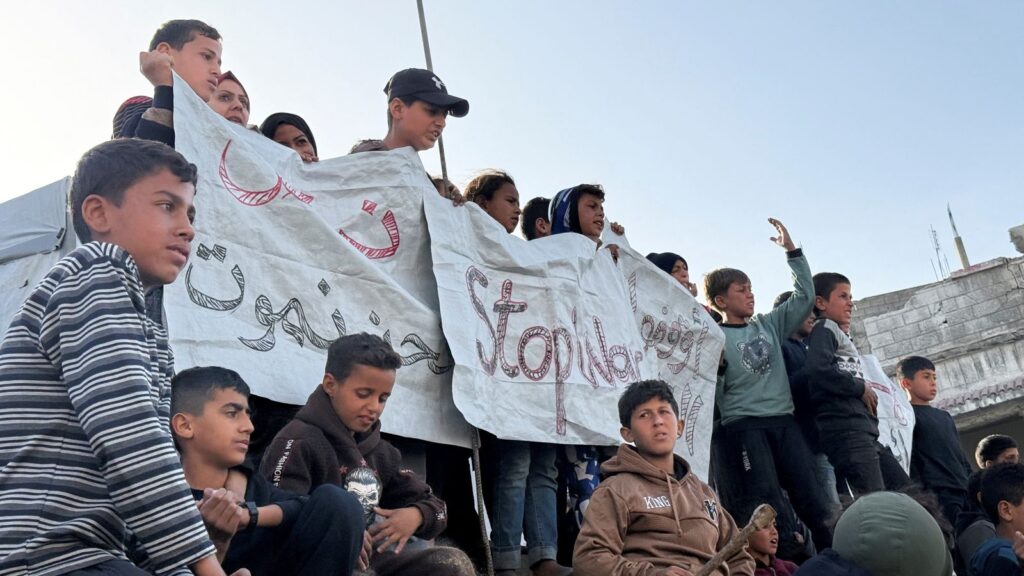Anti-Hamas chants have been heard in a rare sign of dissent in northern Gaza during a protest in which hundreds of Palestinians called for an end to the war.
Footage and images shared on social media showed people chanting, “Hamas out”, as they marched down a street in Beit Lahiya surrounded by buildings damaged in the conflict.
People were also shown chanting, “We don’t want war”, while holding banners saying, “We are dying” and ‘Stop the war”.
One witness, who did not want to be named, said: “It was a spontaneous rally against the war because people are tired and they have no place to go.
“Many chanted slogans against Hamas, not all people, but many, saying ‘out Hamas’.
“People are exhausted and no one should blame them.”
Videos and photographs shared on social media were said to have been taken on 25 March.
Senior Hamas official Basem Naim said people had the right to protest at the suffering inflicted by the war.
But he denounced what he claimed were “suspicious political agendas” exploiting the situation.
He said: “Where are they from, what is happening in the West Bank?
“Why don’t they protest against the aggression there or allow people to take to the streets to denounce this aggression?”
The comments, reflecting tensions among Palestinian factions over the future of Gaza, came several hours after the rival Fatah movement called on Hamas to “respond to the call of the Palestinian people in the Gaza Strip”.
Fatah leads the Palestinian Authority in the occupied West Bank.
Prime Minister Benjamin Netanyahu said the protest showed Israel‘s decision to renew its offensive was working in Gaza, where Hamas police – the group’s enforcers – have again disappeared after emerging during a ceasefire.
Read more:
What happened to the Gaza-Israel ceasefire?
Israeli strike hits key hospital in Gaza
More than 50,000 Palestinians have been killed by the Israeli campaign in Gaza, according to the territory’s health ministry.
The Hamas-run authority does not distinguish between civilians and combatants in its count, but has previously said more than half of those killed in the conflict were women and children.
The war began when Hamas militants carried out a cross-border raid into southern Israel on 7 October 2023, killing 1,200 people and capturing around 250 hostages.
Israel responded with an air and ground offensive in Gaza.




